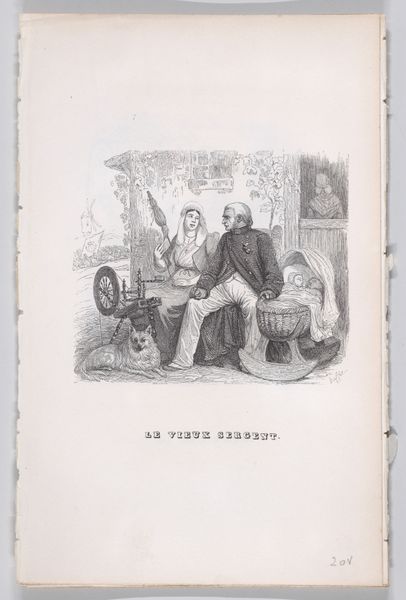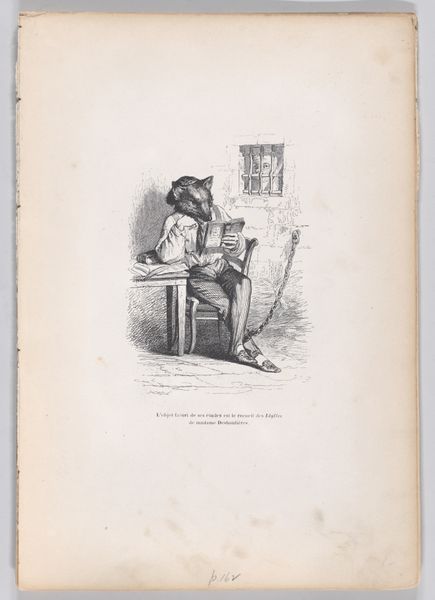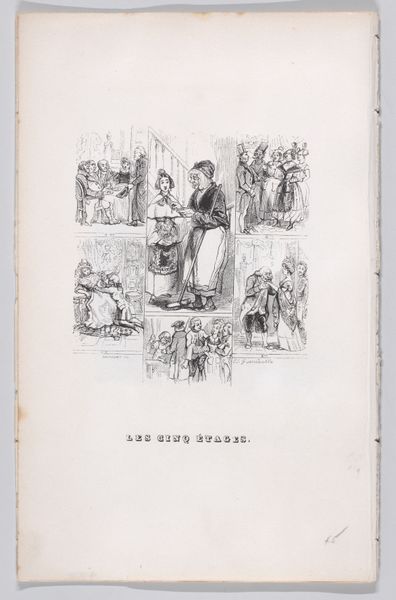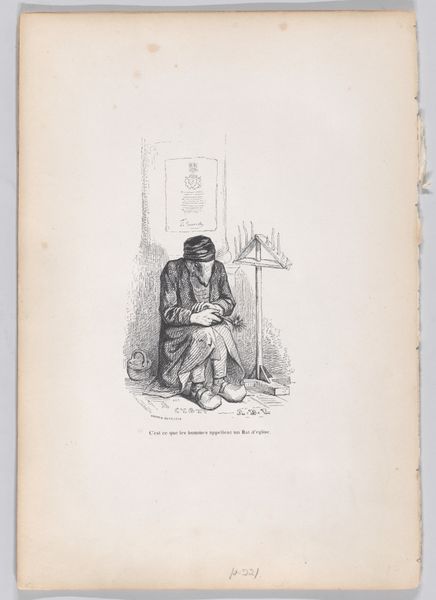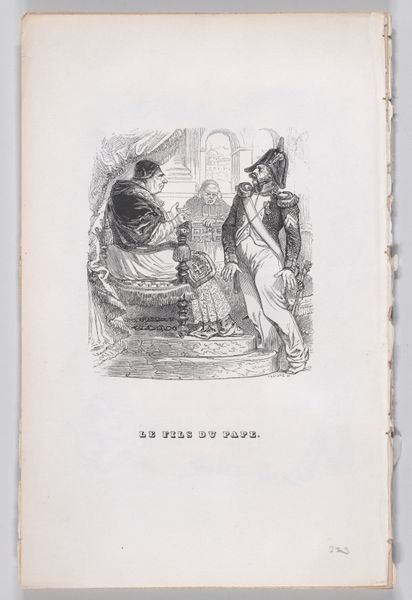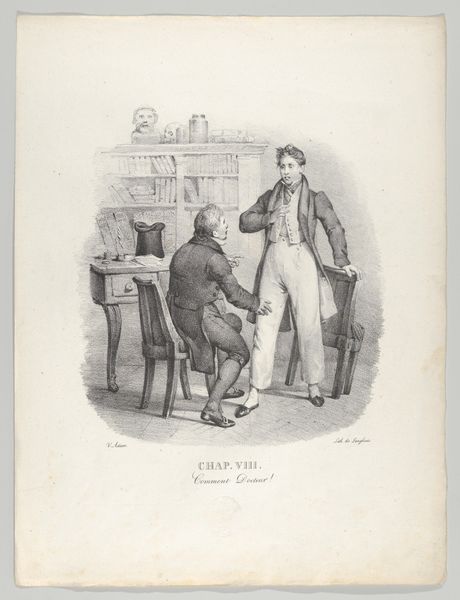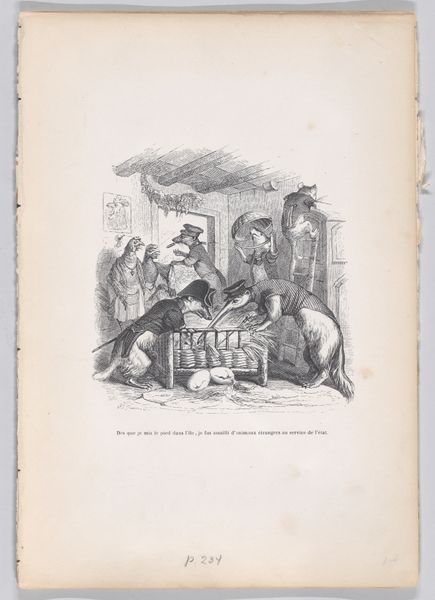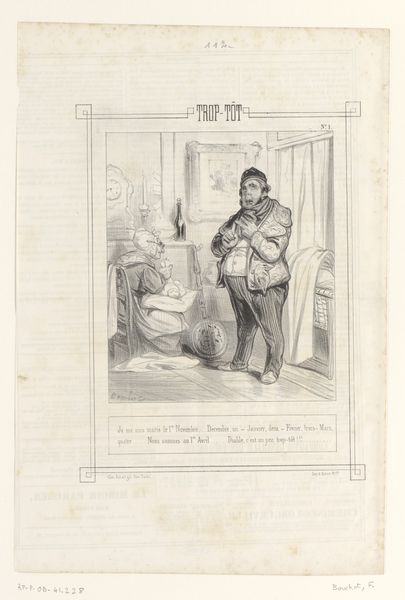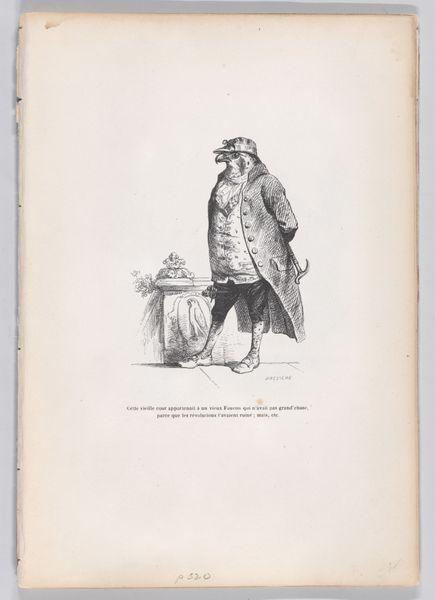
"The Old Flag" from The Complete Works of Béranger 1836
0:00
0:00
drawing, lithograph, print
#
portrait
#
drawing
#
narrative-art
#
lithograph
# print
#
figuration
#
romanticism
#
genre-painting
Dimensions: Sheet: 8 5/8 × 5 1/2 in. (21.9 × 14 cm)
Copyright: Public Domain
Editor: Here we have "The Old Flag," a lithograph created by J.J. Grandville in 1836, originally part of a collection of prints illustrating Béranger’s complete works. It's a poignant scene; a man kneels, clutching what I assume is the old flag, beside a bed. What social or political commentary do you see embedded within this image? Curator: This image offers a powerful commentary on the changing social and political landscape of France in the aftermath of the Napoleonic era. The "Old Flag" likely represents the tricolor, a symbol deeply associated with the revolution and Napoleonic glory, now relegated to a relic, treated almost as a sick or dying patient in that bed. Editor: So it’s not just about the flag itself, but about what it *represents* historically? Curator: Precisely. Grandville's work, published in 1836, reflects a period of Restoration France attempting to reconcile its revolutionary and imperial past with the new monarchical order. Notice the somber expression of the man, a veteran perhaps. His act of embracing the flag underscores a deep sense of loss and nostalgia for a bygone era. What institutions have upheld the meaning and importance of national pride and nationalism during times of political change? Editor: Museums, schools, even the arts themselves through things like patriotic songs and imagery. They shape public perception, right? Curator: Exactly! The arts played a crucial role. This print wasn't just a piece of art, but part of a larger project of shaping Béranger's public image. Béranger was a popular songwriter whose works often critiqued the establishment and celebrated the common people and Napoleonic values. Therefore, prints like "The Old Flag", served as political statements circulated among the French people, sustaining those revolutionary sentiments and symbols even under a restored monarchy. What have we, together, discerned in this picture of memory and politics? Editor: I see how the print reflects the complex negotiation between public sentiment, political power, and the arts during a time of enormous social upheaval. Curator: Indeed. And how the visual arts are intertwined with power. Considering the institutional role of art provides insight into this critical moment of history.
Comments
No comments
Be the first to comment and join the conversation on the ultimate creative platform.
